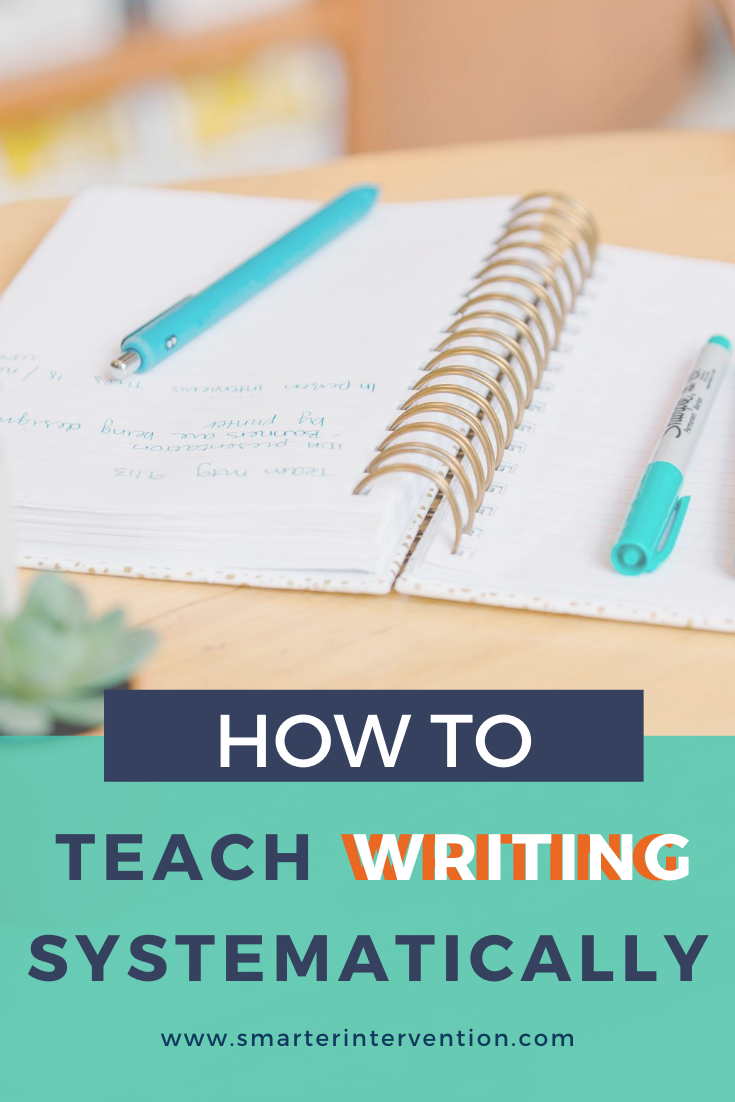How to Teach Writing Systematically
Hey There!
We’re so glad you’re taking your time to be here with us gathering tips and tricks to support your literacy intervention. Today, we wanted to jump into one of the tougher topics to teach!
Writing
If you’ve been following us you know that we work with students on both reading and writing in our intervention setting because reading and writing are reciprocal processes. For every reading task, there is a matching writing task.
When we consider the importance of reading paragraphs and comprehending the information, we realize that writing a paragraph in a format that is easy to comprehend is a reciprocal process.
The problem for many of our students is that they don’t know how to format paragraphs or more complex written pieces effectively. So just like we do with all other aspects of literacy, we put together a framework for students to follow.
When we teach writing we work through a progression. We target four main processes for paragraph-level writing and beyond.
Narrative, Informative, Opinion, Persuasive
Step 1 -
We utilize different graphic organizers for each of the four different types of writing. Ideally, what we want students to do is to be able to recognize what type of writing they are being asked to complete and then pick the appropriate graphic organizer from there.
Once they know what type of writing they are completing we use space to brainstorm thoughts and ideas. What students must recognize here is that our first thought is not always our best thought! This gives students an opportunity to expand their thoughts and ideas before meeting pen to paper.
Step 2 -
Once we have brainstormed ideas, we need to pick which ideas we plan to run with. We need students to determine whether they can provide adequate elaboration on their ideas before proceeding.
Step 3 -
Once we’ve decided on which topic we want to expand on, we begin by putting together our body sentences (or paragraphs). We also want students to think about introductory phrases such as first, next, last, in my opinion, or you may think… as students become more advanced they can use more complex transitions. We use this deck to give students ideas!
Steps 4 & 5 -
We repeat the process in Step 3 for our subsequent details.
Step 6 -
After we’ve completed our details, we want to add our introduction. Our introduction should be added after the details have been put in place because we need to determine common themes around all of our details to craft the introduction. We need to make sure our introduction has a solid hook to keep a reader engaged and interested!
Step 7 -
After we’ve completed our introduction, we want to add our conclusion. Our conclusion should sum up the three details in a similar way to the introduction but using different words. We should leave our readers with a strong takeaway or “so-what” message!
Step 8 -
Finally, we want to edit our paragraph. You can choose an acronym to help your students remember which things they should be checking for within their writing. We always remind our students to save editing for last!
Then, be sure to jump into our FREE workshop, “How to Align Your Writing Instruction with the Science of Reading” to learn more and grab access to a FREE writing resource!


